The title of this article is made up of the famous song of U2 or better yet the words of any of us who continually roll low when searching for something! Here is my typical search in a DnD game … DM asks me to roll for search. I roll a “1” and DM says … “You Find Nothing.” Next party member rolls a “17” DM says to them “You see a strange book on the table…in plain view.” [I just shake my head]
In Labyrinths and Legends searching isn’t a one and done roll, you are able to use some search action skills to double check that you’re not missing something. This doesn’t mean you will actually find anything but you’ll have a better chance to spot something if it is there!
As you saw in the previous article about our Combat System we are trying to make playing our Solo RPG a little more engaging, tactical and fun. Once we started to develop our ideas further we discussed other traditional skill areas in group RPGs that could use a little more engagement and fun, we determined that Searching, Lock Picking, and Traps Detecting/Disarming were some natural choices.
For this article, we are going to overview the concepts for Searching as of the writing date of this article. My caveat here is that this can and probably will change as we complete playtesting and development etc.
Standard Search Protocol in other RPGs
First off let’s talk about search in many other RPGs. Searching is typically just a target number that you must roll on a specific skill and if you roll equal to or over a certain number you will find things. Easy peasy … but not very engaging.
When and Where Can I Search?
To keep you from spending time searching every nook and cranny in every area of the world, which would make you look insane to the NPCs and to the people in the real world watching you roll dice, you will only be presented with the option for search when it makes sense. The option for searching won’t necessarily mean there is something there, but instead of spending time searching a clearly empty room, we rather allow you to search a room that has a table and a pile of bones in it.

What about Traps?
Some areas will be marked with a Detect Trap icon, this doesn’t mean that there is a trap but there is a potential for it to have one. If you desire you will be able to attempt to detect a trap and if found disarm it. We will be showcasing the detect trap and disarm trap skills at a later date!
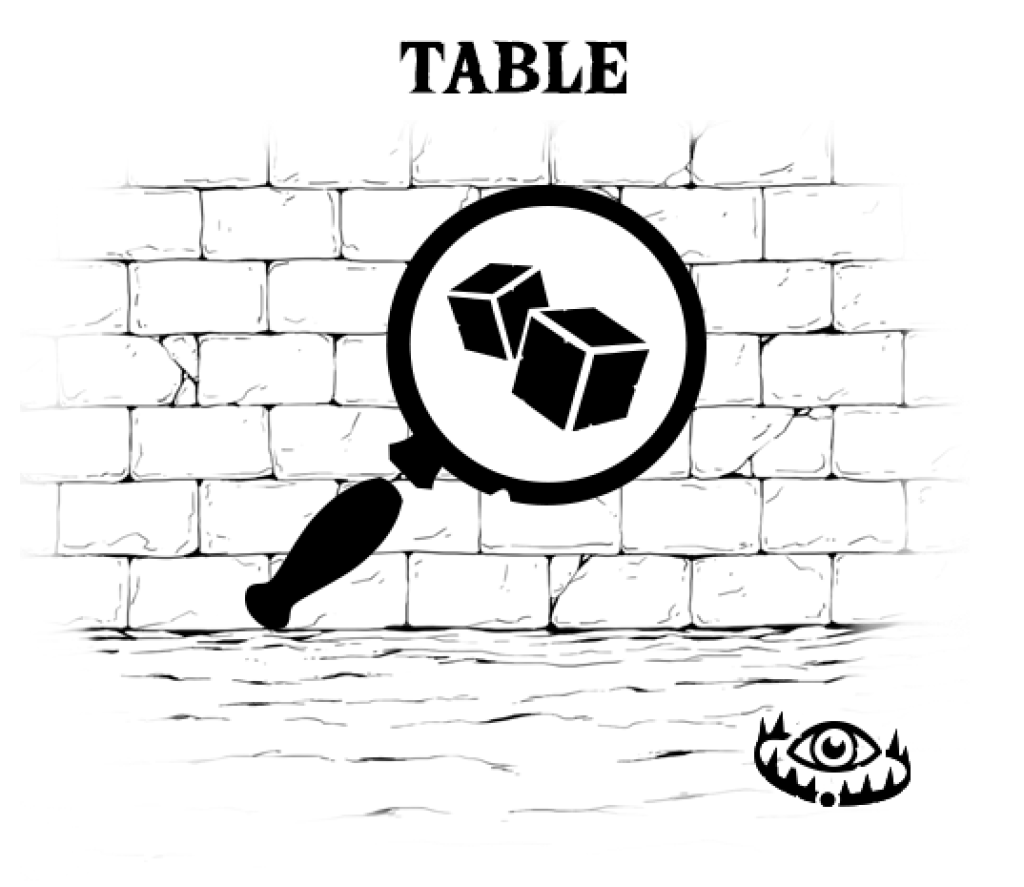
Initial Search
When you first enter the search screen you will be presented with one or more areas to search. The first thing you will do is roll your base dice for each area and enter the number rolled for each area. Base dice are based on the current tier your character is in … so in our example, we are a Neophyte (Tier I) so your base dice are 2d6. Your roll for each area will, therefore, be between 2-12. Once you have entered your initial rolls it is time to hit the search button to see if you found anything and to whether you made any noise.
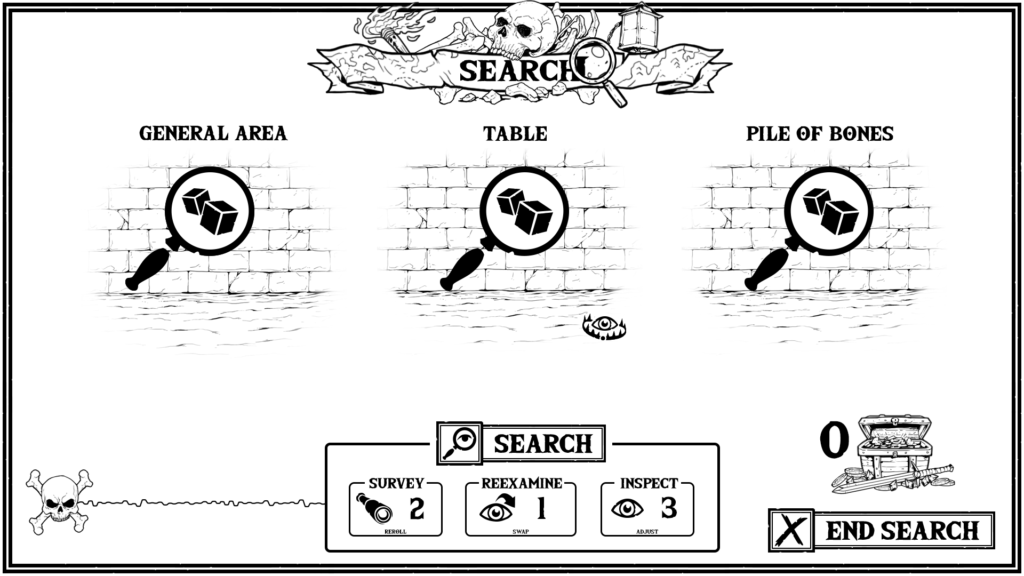

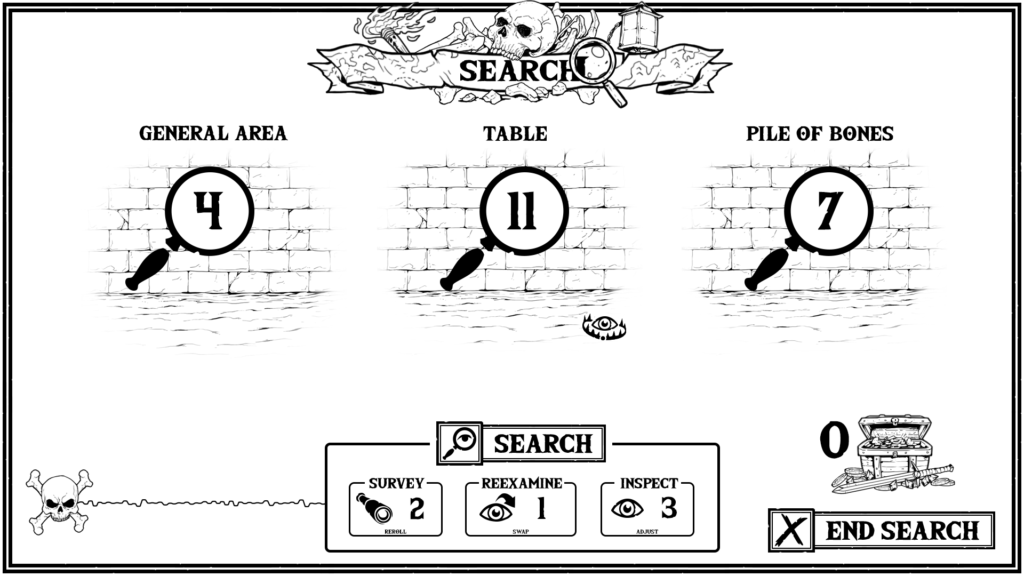
Ohhh, look at the Shiny Shiny!
If there are items to find in a search area they will have a target number that will need to be rolled (equal or higher) to find that item. For example, there could be some gold in the pile bones with a target number of 5 and jeweled dagger in the table with a target of 11. If you have the target number in your search area when you hit the search button you will be presented with the loot details for you to record on your character sheet. Then it’s back to searching…
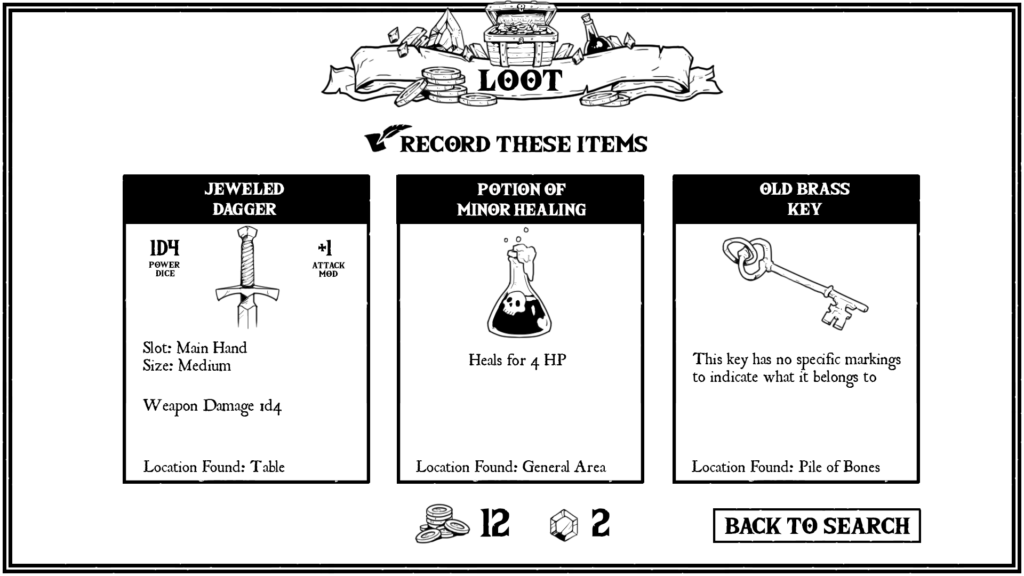
If at first you don’t succeed try and try again!
Whether or not you found something your search doesn’t have to be over. Once you have done the initial search you will then have the ability to continue searching by using your search skills. There are 3 search skills Survey, Reexamine, and Inspect. These skills allow you to manipulate your initial dice rolls and search the area more thoroughly.
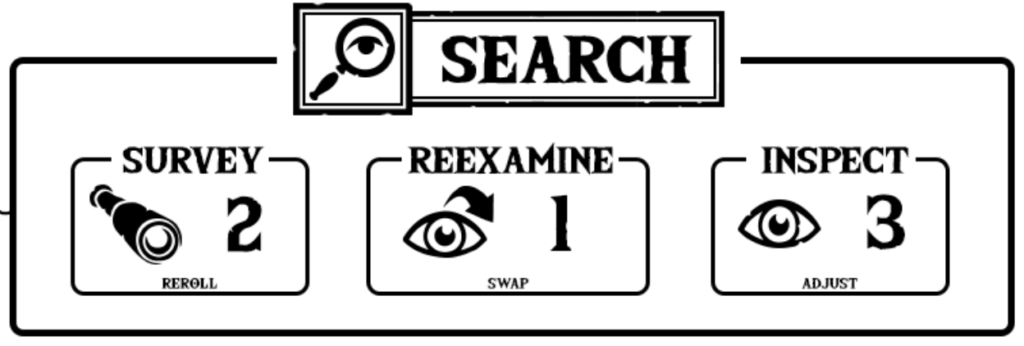
Survey (Reroll)
If you decide to use the Survey skill you will be able to reroll one of your search rolls. If you have more than 1 Survey you could reroll more than one search roll or reroll one multiple times. After you have rerolled and locked in your new roll you can decide to make other changes with skills or you can hit the search button to see if you find anything.
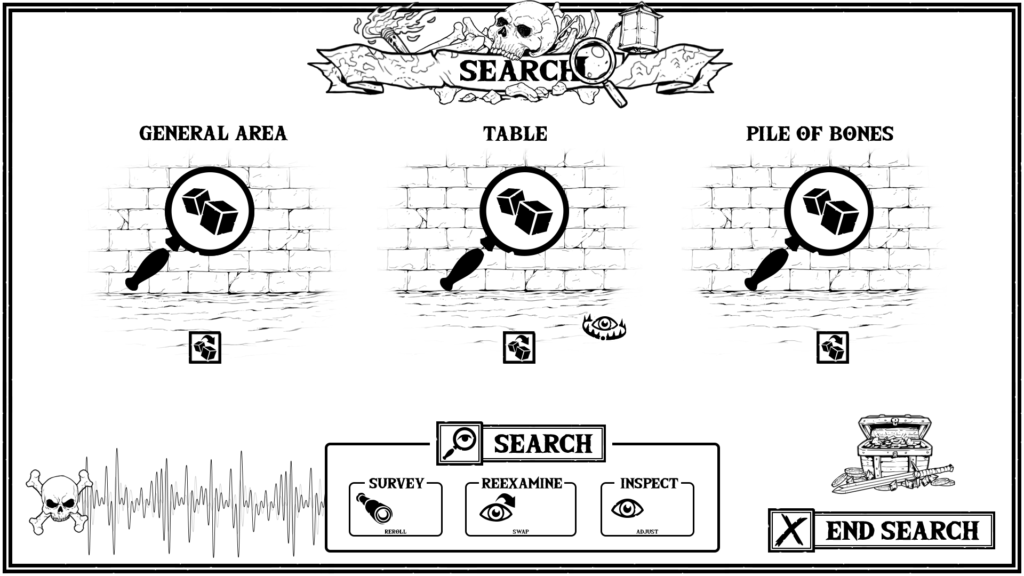
Reexamine (Swap)
If you have more than one search area you can use the reexamine search skill. This will allow you to swap two of the numbers between two of the search areas. This is great for when you have a high number in one area where you already searched, you can swap it out to another and then hit the search for a higher chance of finding something.
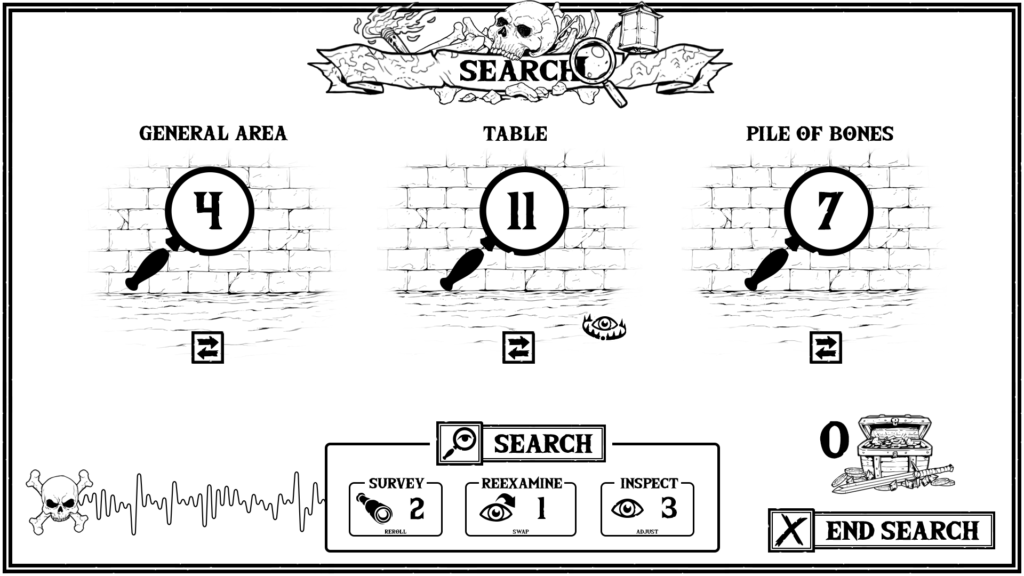
Inspect (Adjust)
The Inspect skill will allow you to change the number of an area. This will allow you to increment the number for a greater chance to find something. Once you make the number of adjustments you desire for each area you will hit the search button and see if it the deeper inspection uncovered anything.

Did you hear that?
With every search skill you use after the initial search there will be a chance for you to make noise and increase the chances of attracting unwanted attention. The noise meter will show you just how noisy you are being and noise typically attracts more than a single foe as your clanks, and thuds echo down the corridors! If you attract those unwanted search crashers you will have to decide to fight or flee, regardless of whether you stand your ground or flee your search of the area will be over.

How do you acquire more search skills?
The special Search skills will be acquired from multiple sources. Certain Classes, Races, and Pets will provide additional search skills and you will also be able to acquire enhancement of these skills from certain NPCs in the world.
Well, I hope this post helps provide some insight into the Search system of Labyrinths and Legends. We know you will find it an engaging and a fun press your luck feeling as you try to find that elusive item you just know is there.
Be sure to follow us on social media and Register to get the latest info on LnL!
